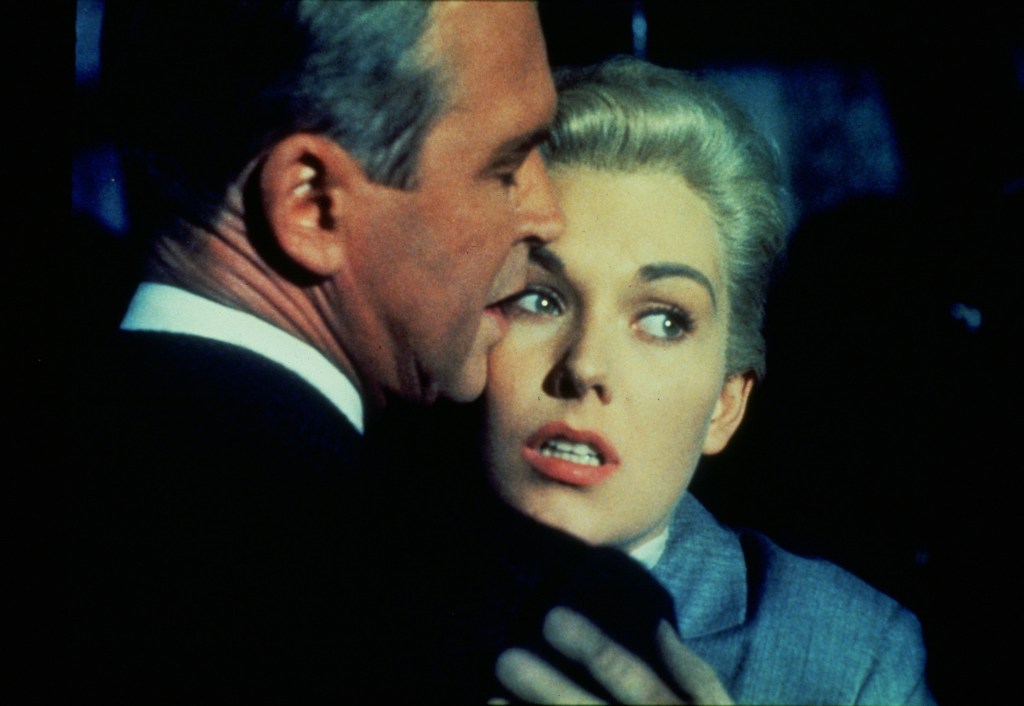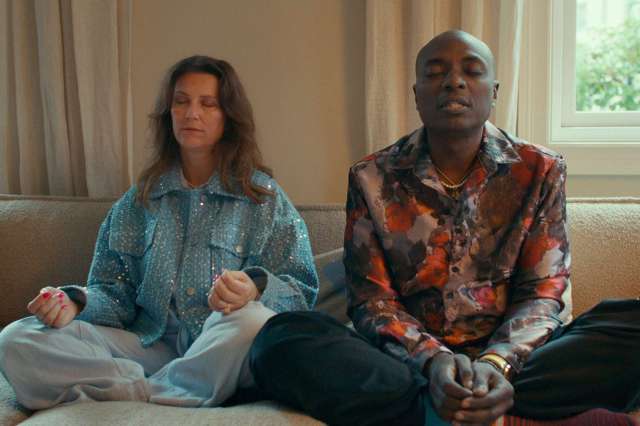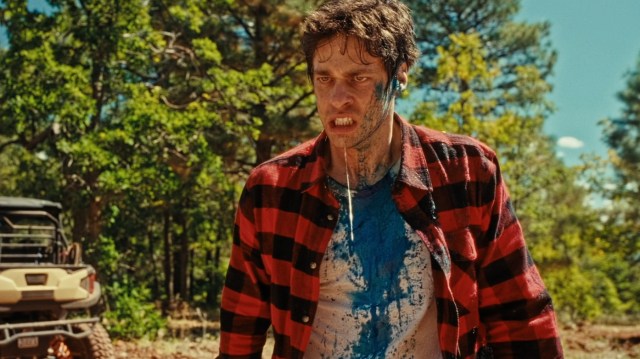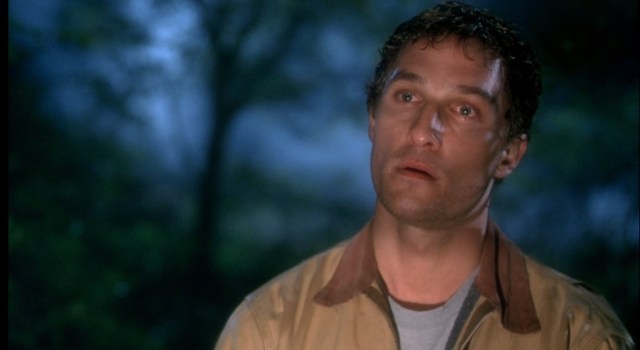Psychological thrillers are a movie genre defined by suspense and unreliable narrators. As the story is most often told from the point of view of a human protagonist, they (and thus the audience) are vulnerable to being misled by things like mental illness, drugs, gaslighting, supernatural phenomena, brain injury, etc. In a psychological thriller, suspense is driven by the gap between what the narrator/audience knows and what is actually happening in the “reality” of the story. This means it is common for psychological thrillers to have a twist-ending when these two points of view converge.
Psychological thrillers are a good middle ground for viewers who want to watch something lightly scary or a scary movie without much gore and horror fans who just want something suspense heavy. In comparison to other genres, psychological horror movies will be more focused on the intent to frighten than psychological thrillers, and psychological dramas will lack the suspense of a psychological thriller. Murder mysteries are a common form of psychological thriller as are movies about “insane asylums”.
Table of Contents
This list catalogs the best psychological thrillers ever made:
Old Psychological Thrillers
M (1931)
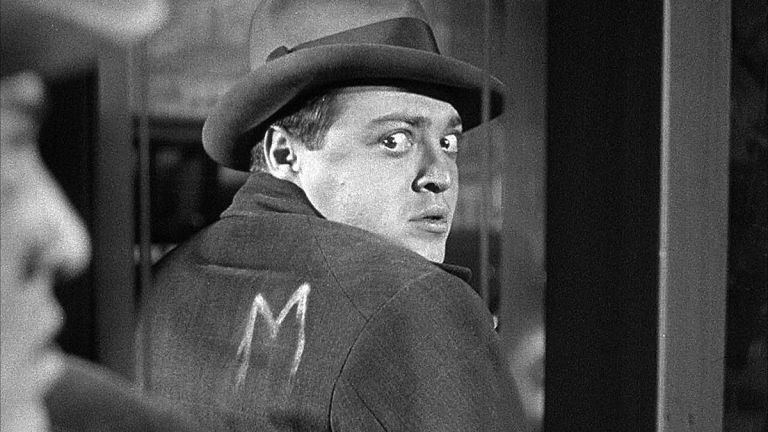
Some consider M to be the “blueprint for the psychological thriller”. It is the first sound film by legendary German Expressionist director Fritz Lang. Peter Lorre portrays Hans Beckert, a child killer and implied pedophile who rains terror throughout Berlin during a string of unprecedented child abductions and slayings. When the local police prove to be too corrupt and inept to find the killer, Berlin’s criminal underworld joins forces to catch him. In the film’s most compelling scene, when Hans is dragged before a kangaroo court in an abandoned warehouse, he begs the assembled thieves and racketeers for mercy because he is ruled by impulses over which he has no control.
Gaslight (1944)

Gaslight is a psychological thriller famous for inspiring the noun “gaslighting” to describe the sustained act of making someone question their perception of reality via psychological manipulation. Credit for this should realistically go to the 1938 play Gas Light which is the basis for a 1940 British film Gaslight, which predates the American version by four years. However, Gaslight (1944) is the most well known reference point for what gaslighting means.
Ingrid Bergman portrays Paula Alquist, the niece of famous opera-singer Alice Alquist, who marries Gregory Anton (Charles Boyer) after a two-week romance. The newlyweds movie into Alice’s townhouse in London where Gregory slowly isolates Paula from the outside world. He manipulates her by hiding things and claiming her memory is poor when Paula can’t find them. The film gets its name from Gregory dimming the home’s gaslights and then claiming Paula is crazy when she describes the gaslights being dimmed. Eventually, Paula becomes convinced that she is losing her mind.
Rear Window (1954)
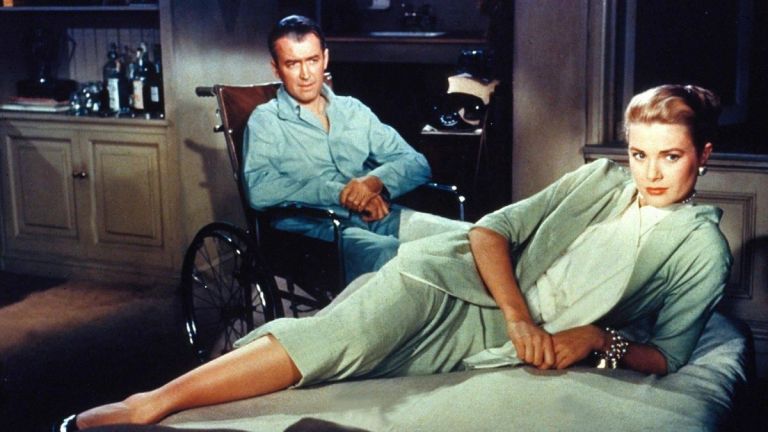
A psychological thriller about voyeurism, Rear Window sees L. B. “Jeff” Jeffries (James Stewart) as a photographer who is using a wheelchair after breaking his leg at work. Amid a sweltering Greenwich Village summer, Jeff passes the time by looking out the rear window of his small apartment and spying on his neighbors. His girlfriend (Grace Kelly) visits him and the two come to believe that one of Jeff’s neighbors is a murderer.
Les Diaboliques (1955)
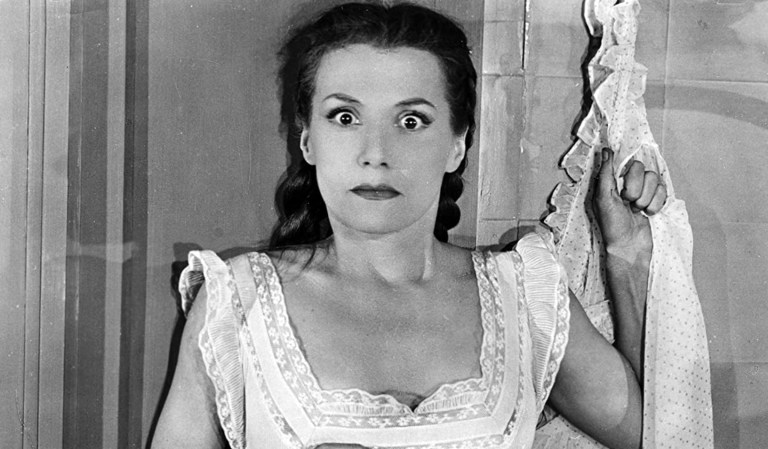
Michel Delassalle is a school principal who is widely despised due to his abusive and domineering nature. He is cruel to both his wife Christina (who is actually the breadwinner in their relationship) and his mistress Nicole. Together Christine and Nicole hatch a plan to kill Michel and take over the school. They believe they have a foolproof plan, but at some point while carrying out the crime, Michel’s body goes missing.
Vertigo (1958)
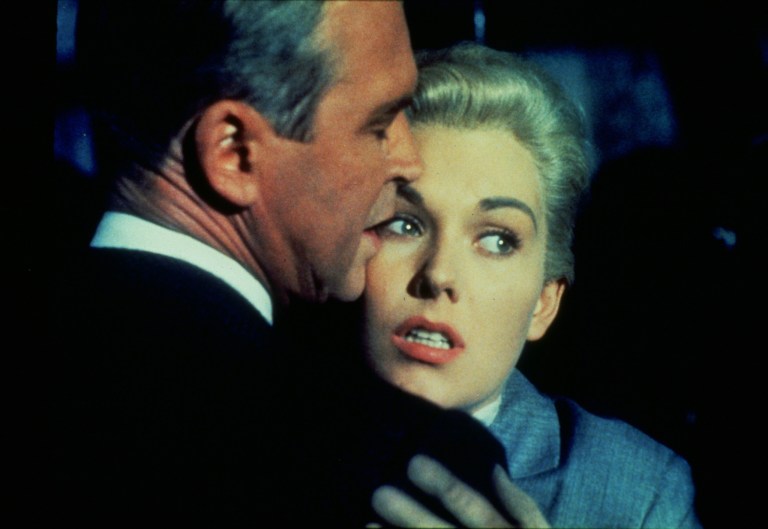
This Hitchcock film can be found near the top of many critics’ “Greatest Movies of All Time” lists. James Stewart stars as John “Scottie” Ferguson, a San Francisco police detective who has retired prematurely due to his fear of heights. He is hired by his wealthy college acquaintance Gavin Elster (Tom Helmore) to track Gavin’s wife, Madeleine (Kim Novak). Against his better judgment, Scottie falls deeply in love with Madeleine. When she disappears, Scottie reluctantly moves on to a working-class woman named Judy and tries to sculpt into the spitting image of Madeleine.
The Housemaid (1960)

In South Korea during the years following the Korean War, Mr. Kim is a piano teacher who gives lessons to workers in a local factory. His wife works from home at a sewing machine, but she is pregnant with their third child. Mr. Kim hires his piano student, Myung-sook, to live with the family and help with domestic labor during his wife’s pregnancy. Instead, Myung-sook reveals herself as a femme fatale that drives the family apart.
What Ever Happened to Baby Jane? (1962)
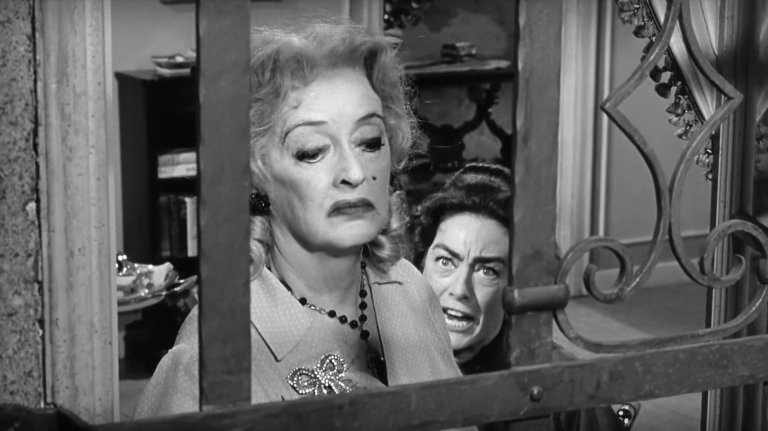
Legendary American actresses Bette Davis and Joan Crawford co-starred in this creepy psychological thriller about two aging sisters living together in a Hollywood mansion. Bette Davis is “Baby Jane” Hudson, a former child actress whose stardom was eclipsed by her younger sister, Blanche (Joan Crawford). Blanche’s career was then cut short because of a car accident (likely caused by Jane’s alcoholism) that resulted in Blanche needing to use a wheelchair. Still resenting her younger sister, Jane becomes Blanche’s sadistic “caregiver,” cutting her off from outside communication and cruelly torturing her while she plans a far-fetched Hollywood comeback.
Taxi Driver (1976)
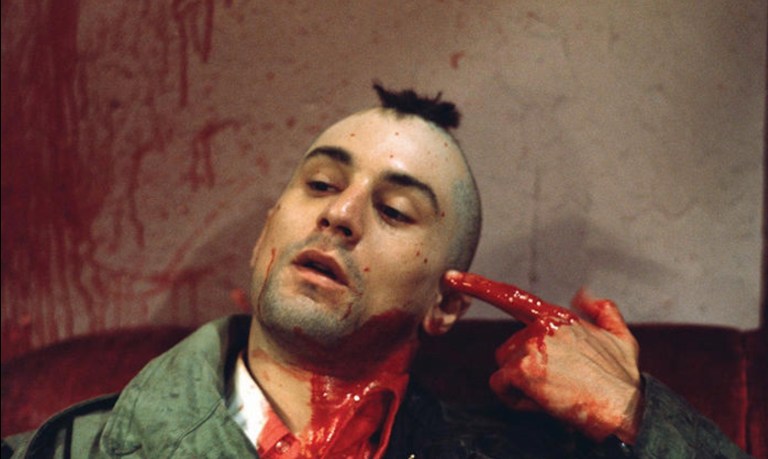
In a role that cemented his status as one of Hollywood’s finest actors, Robert De Niro stars as Travis Bickle, a lonely Vietnam War vet who takes a job as a nighttime taxi driver to deal with his insomnia. He focuses his romantic attention on a pretty young presidential-campaign assistant named Betsy (Cybill Shepherd), but Travis is so socially inept that he sees nothing wrong with taking her to see a hardcore porno movie on their first date. When Betsy rejects him, Travis is crushed. He also suffers a mental breakdown which convinces him that he is a noble warrior who must “wash all the scum off the streets.” He befriends an underage prostitute named Iris (Jodie Foster) and makes it his mission to rescue her from Manhattan’s seedy underbelly—no matter how much blood he has to spill.
Cape Fear (1991)

In one of his most disturbing roles ever, Robert De Niro stars as Max Cady, a sadistic rapist who’s recently been released from prison after serving 14 years for the rape of a young girl. But Max has been seething with anger the entire time because he feels his public defender, Sam Bowden (Nick Nolte), withheld crucial evidence that could have kept him out of prison. With chiseled muscles and a burning hatred, Max sets out to terrorize Sam and his family, especially his young daughter (Juliette Lewis). Martin Scorsese directed this remake of the 1962 classic starring Robert Mitchum as Max Cady and Gregory Peck as Sam Bowden.
Copycat (1995)
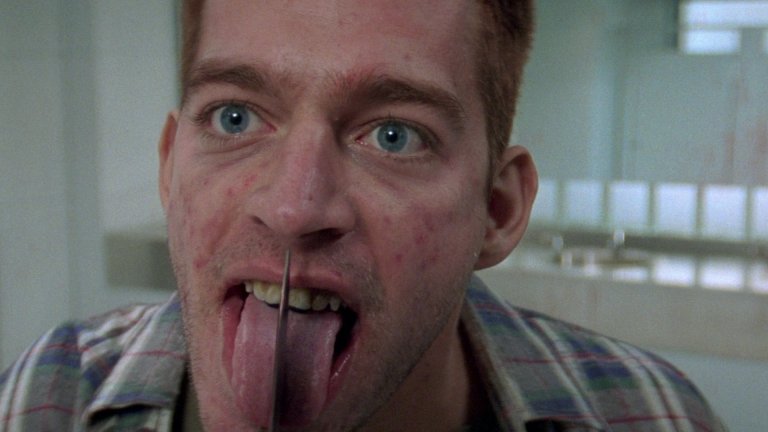
An expert on criminal psychology, Dr. Helen Hudson (Sigourney Weaver), narrowly escapes an attack by one of her subjects, serial killer Daryll Lee Cullum (Harry Connick Jr.). Afterwards she becomes agoraphobic, locked in her apartment and visiting the outside world only through the internet. Police call on Dr. Hudson for help with a new string of unsolved murders, a copycat killer who begins stalking her.
Seven (aka Se7en, 1995)
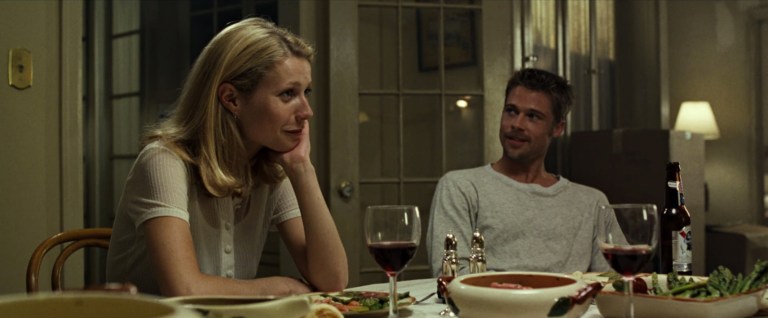
Jaded detective William Somerset (Morgan Freeman) has seen it all and is ready to retire. Rookie detective David Mills (Brad Pitt) has all of the enthusiasm and lack of experience necessary not to be as jaded as his partner Somerset. When the two of them are assigned to solve the case of a new serial killer known only as “John Doe” (Kevin Spacey), they start to realize that he is dispatching victims based on their perceived violation of the seven deadly sins. David Fincher directed this film with a unique twist: the shocking third act takes place after the detectives arrest the killer.
See also: 50 Trivia Items About the Movie ‘Seven’ (1995)
Perfect Blue (1997)

Former pop star Mima slowly loses her grip on reality while pursing a new career as an actress. Told from Mima’s (unreliable) perspective, this psychological thriller directed by Satoshi Kon is about identity as it relates to performers and the people who watch (and obsess over) them. At times Perfect Blue can feel like a giallo in the vein of Tenebrae (1982), while at other times it has been compared to Alfred Hitchcock’s work and his ability to build incredible psychological tension around a central character.
See also: The Best Animated Horror Movies
The Game (1997)

Nicholas Van Orton (Michael Douglas) is an exceedingly wealthy San Francisco investment banker who is so isolated and unhappy that he spends his 48th birthday alone, obsessing over the fact 48 was the age his father was when he died by suicide. When his younger and less inhibited brother Conrad (Sean Penn) comes into town, he gives Nicholas a gift for “the man who has everything”—a ticket to Consumer Recreation Services, a company that designs games tailored to the needs of “whatever is lacking” in the recipient’s life. Nicholas agrees to play, but he slowly starts to suspect that he may have been set up for an elaborate scheme to rob him of his wealth.
Fight Club (1999)
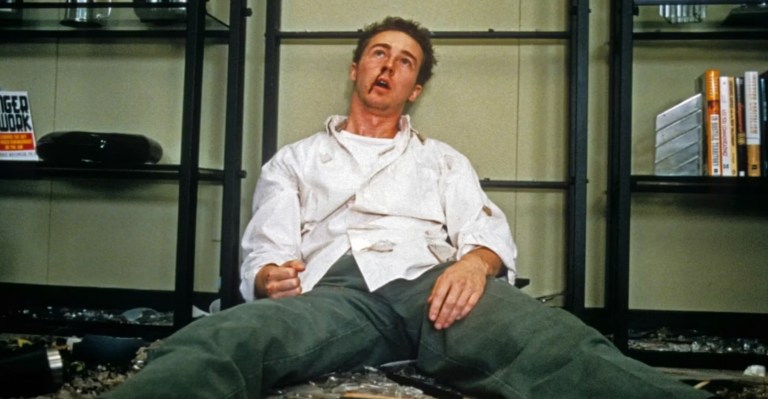
An unnamed narrator (Edward Norton) is a frustrated office worker fed up with his boring middle class life. Although he doesn’t have cancer, he attends cancer support groups where he meets Marla (Helena Bonham Carter), who also attends these groups and also doesn’t have cancer. On a plane while presumably returning from a business trip, the narrator meets a charismatic soap salesman named Tyler Durden (Brad Pitt) who invites him to join a local club where men rediscover joie de vivre through bare-knuckle boxing. The fight club grows to the point where it becomes a beast that’s out of their control and Marla slowly shifts her affections away from the narrator toward Tyler.
The Talented Mr. Ripley (1999)

Set in 1958, a wealthy man mistakes Tom Ripley for a Princeton classmate of his son Dickie (Jude Law). He pays Tom to travel to Italy and convince his son to come home. However, when Tom meets Dickie and his girlfriend Marge (Gwyneth Paltrow), he decides he would rather stay and vacation with them. Tom’s uncanny ability to lie and imitate others allows him to social climb and avoid detection as an imposter.
New Psychological Thrillers
Memento (2000)

Leonard Shelby (Guy Pearce) is a former insurance investigator with severe short-term memory loss he sustained from a head injury while trying to intervene in the murder of his wife. In fact, the last thing he remembers was his wife’s murder. Vowing to avenge her death, he finds that his chief enemy is his memory loss—he must take Polaroids of things and scribble endless notes to himself so that he doesn’t forget everything upon going to sleep. Leonard is aided in his quest for revenge by a man named Teddy (Joe Pantoliano), but Leonard begins to suspect that Teddy’s intentions may not be pure.
Donnie Darko (2001)
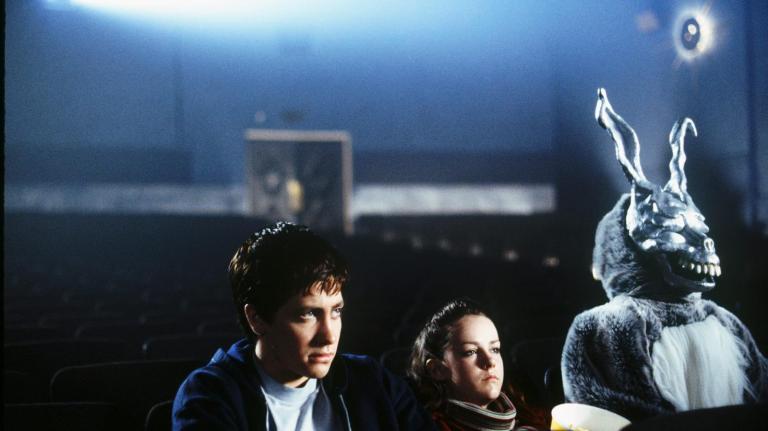
In director Richard Kelly’s surreal cult classic, Jake Gyllenhaal stars in the title role as a mentally ill teenager who has trouble relating to nearly everyone in his life. He begins having visions of a giant rabbit named Frank who tells him the world will end in 28 days. Donnie befriends a new girl at school, Gretchen (Jena Malone), and becomes increasingly disturbed as his encounters with Frank increase.
See also: ‘Donnie Darko’ Explained: An Analysis of Richard Kelly’s Masterpiece
One Hour Photo (2002)
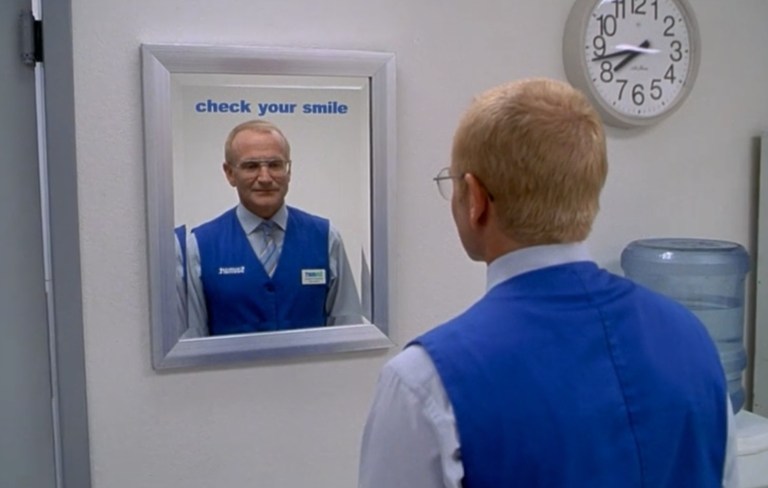
Robin Williams portrays Sy Parrish, an intensely lonely middle-aged man who works as a lab technician at a one-hour photo store in a suburban mall. He forms a delusional parasocial relationship with the Yorkin family, especially matriarch Nina (Connie Nielsen) and her adolescent son Jake (Dylan Smith), who routinely drop off their film to Sy for developing. What they don’t know is that ever since Jake was a baby, Sy has been obsessively tracking the family by making duplicates of all their photos and keeping them for himself. When Sy uncovers some unsavory information about Nina’s husband Will Yorkin (Michael Vartan), he appoints himself a holy crusader aiming to right all that’s wrong with the family.
The Memory of a Killer (2003)
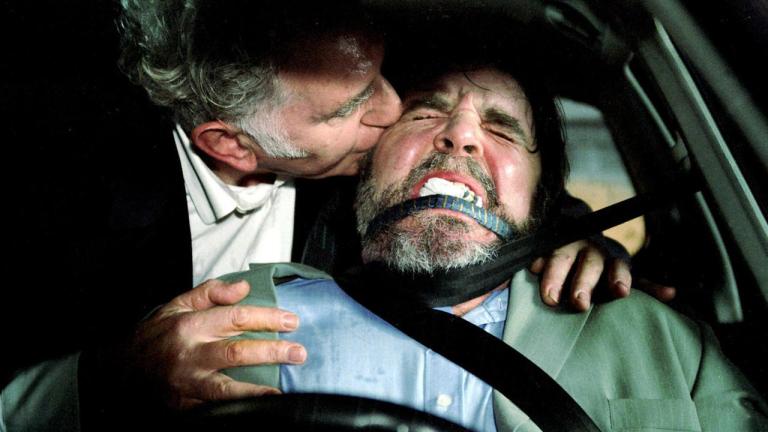
Released in Germany as De zaak Alzheimer (The Alzheimer Case), this action psychological thriller revolves around an aging hit man with early onset Alzheimer’s disease. The job of an assassin requires focus and skill, and his deteriorating psychological health have deadly consequences. This film was remade in English as Memory (2022) with Liam Neeson starring.
The Machinist (2004)

Trevor Reznik (Christian Bale) is a lathe operator at a local factory who hasn’t slept in a full year and is growing gaunt and emaciated as a result. Like the character in Memento, he is also tormented by memory loss and is constantly scribbling little yellow notes to himself. As Trevor tortures himself for no apparent reason, he slowly is able to look himself in the mirror and realize exactly what happened that has made him lose sleep for so long.
Hard Candy (2005)
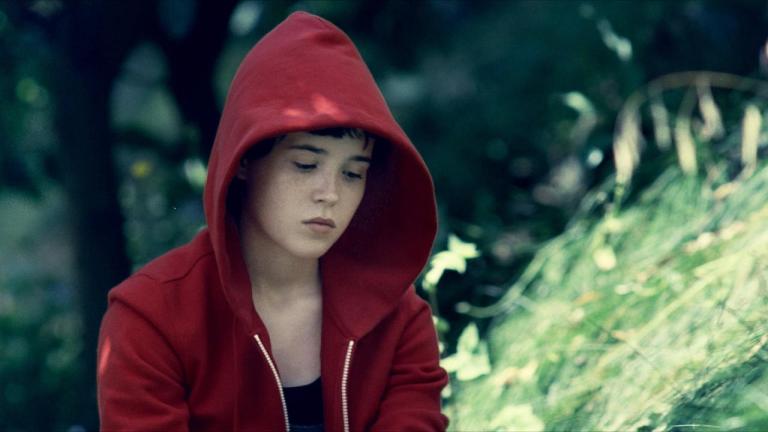
Hayley Stark (Elliot Page) is an exceptionally smart and charming teenage girl. Jeff (Patrick Wilson) is a sleazy fashion photographer. For weeks they’ve flirted online using screen names. When they finally meet in real life at a coffee shop, Hayley persuades Jeff to allow her to come back to his studio for an impromptu photo shoot. But Hayley has different plans—and they all involve torturing Jeff.
Hide and Seek (2005)
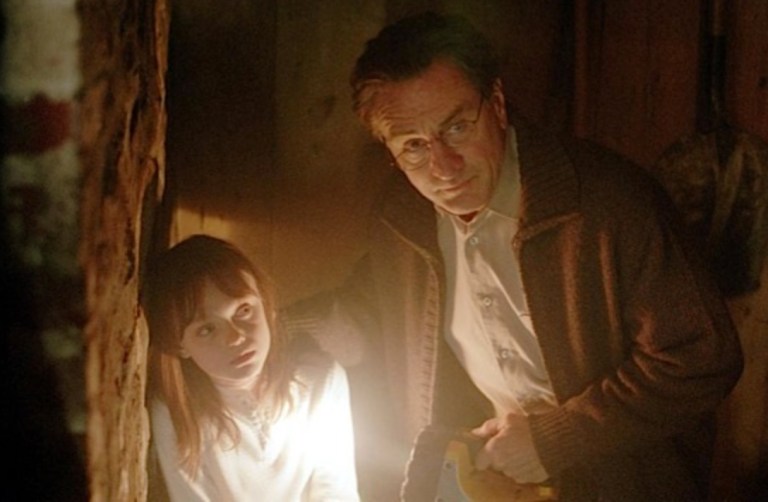
Dr. David Callaway (Robert De Niro) is the father of a young girl, Emily (Dakota Fanning), who is traumatized following her mother’s suicide. After moving from the city to upstate New York, Emily begins acting out and talking about a new imaginary friend, Charlie. Hide and Seek‘s monster twist-ending reveals why this film falls into the psychological thriller category.
Bug (2006)
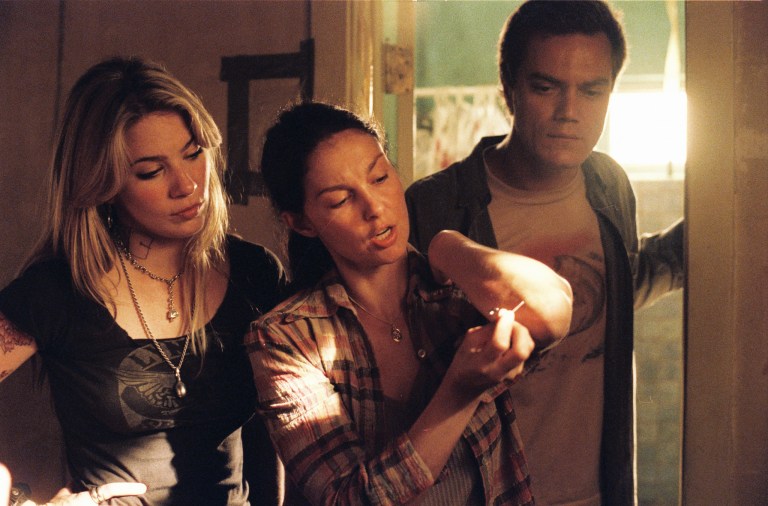
Directed by William Friedkin (director of The Exorcist), Bug sees Ashley Judd as Agnes, a lonely waitress living in a run-down motel. Agnes forms a desperate relationship with a disturbed drifter named Peter (Michael Shannon), and the two of them fall into an increasingly delusional headspace of government conspiracies and bug infestations as they isolate themselves in Agnes’s room. Bug is claustrophobic and disturbing, and it isn’t talked about enough as a gem of mid-2000s psychological weirdness.
Shutter Island (2010)

Leonardo DiCaprio stars as Teddy Daniels, a World War II veteran who is psychologically scarred by his experience helping liberate the Dachau concentration camp as well as the loss of his wife in a fire. He is assigned to investigate the disappearance of a patient from an insane asylum on an island off the Massachusetts coast and finds himself stranded after a raging sea storm. Trapped, Teddy finds the asylum’s psychiatric staff are treating him more like a patient than a visiting detective.
Take Shelter (2011)
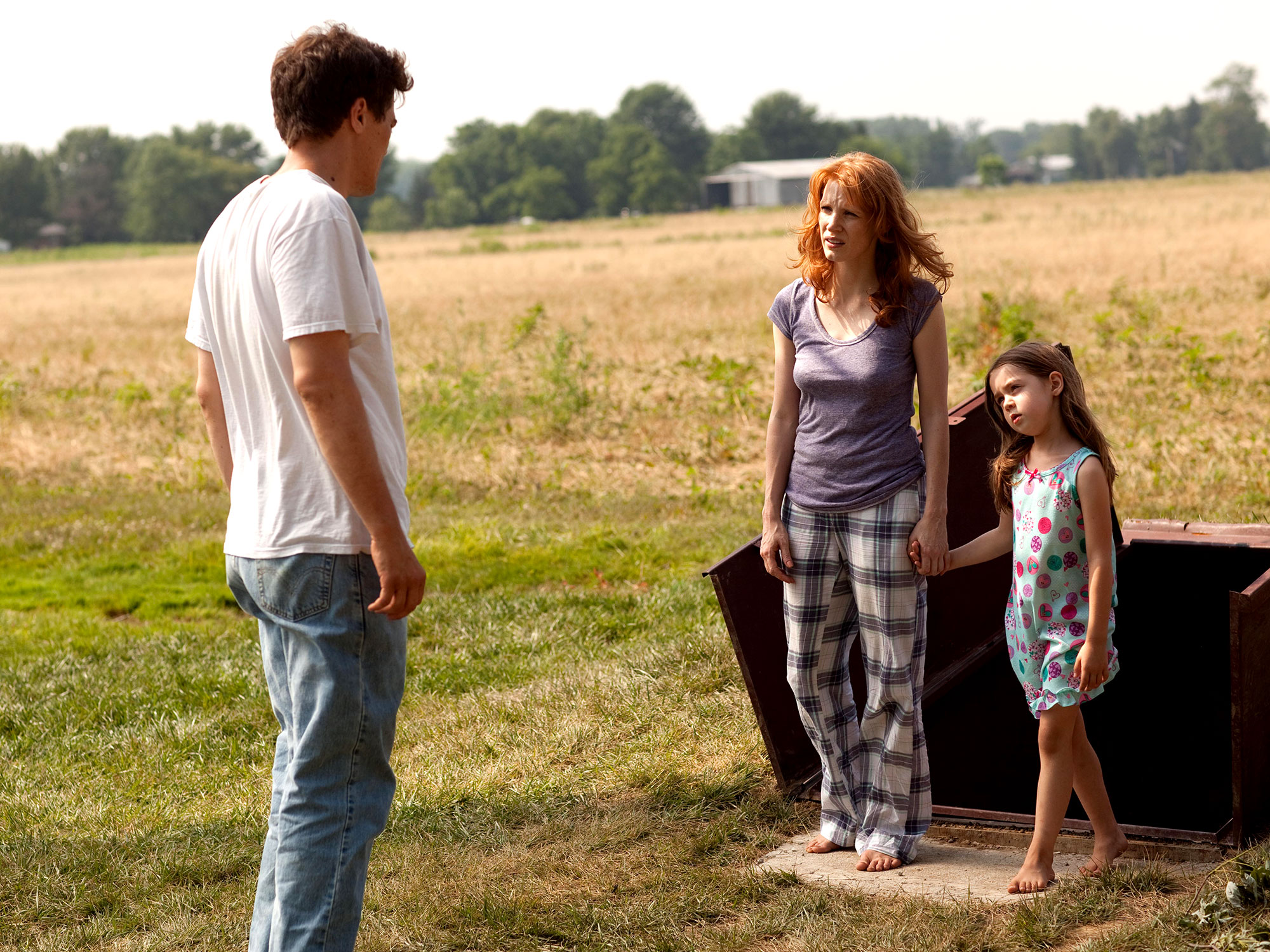
Michael Shannon’s performance is stunning in this psychological thriller about a man, Curtis, who has premonitions about a coming super storm. While he believes in his visions and takes actions to protect his family, Curtis doesn’t share his reasoning with his wife because his mother was diagnosed with paranoid schizophrenia when she was his age. Curtis’ actions and secrecy isolate him from his family, friends and community.
Nightcrawler (2014)

Jake Gyllenhaal stars as Lou Bloom, a financially desperate young man who accidentally stumbles into the world of ambulance-chasing freelance photojournalism. He sells his footage to Nina Romina (Rene Russo), a news director for a local TV station, who encourages him to do more work. Lou becomes obsessed, going farther than any sane photojournalist would to get footage of a triple-homicide home invasion and the ensuing arrest of the perpetrators.
Gone Girl (2014)
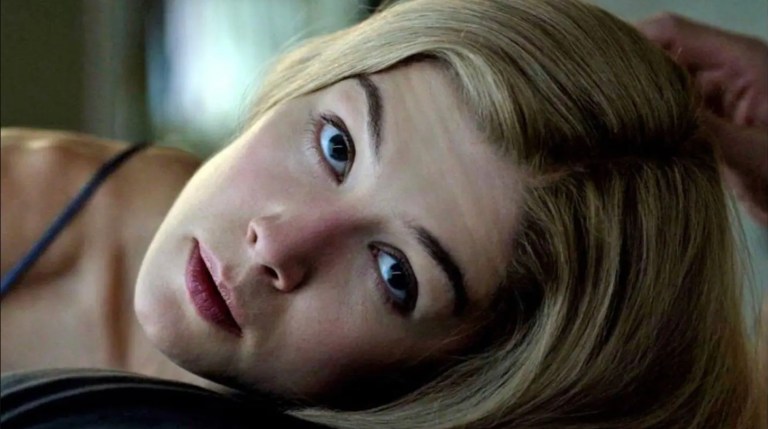
Amy Dunne (Rosamund Pike) is unhappy after losing her job as a writer and relocating from New York City to small town Missouri with her husband Nick (Ben Affleck). Her once charming husband ignores her and spends his time having an affair and socializing at the bar Amy bought for him. To get revenge, Amy meticulously plans and stages her own disappearance, knowing Nick will take the fall.
See also: 25 ‘Good For Her’ Horror Movies
Ex Machina (2014)

A sci-fi psychological thriller about a young computer programmer, Caleb (Domhnall Gleeson), who is recruited by the eccentric CEO of tech company (Oscar Isaac) in order to test his humanoid robot to see if it has gained sentience. Despite their high intelligence and technological savvy, neither Caleb nor his boss are emotionally prepared to be romantically manipulated by the beautiful and brilliant robot, Ava (Alicia Vikander).
See also: 18+ Best AI Movies: Examining Human Nature Through Artificial Intelligence
The Gift (2015)

Simon Callem (Jason Bateman) and his wife Robyn (Rebecca Hall) move from Chicago to LA after Simon takes a new job. Shortly after relocating, Simon bumps into Gordon “Gordo” Moseley (Joel Edgerton), a former high-school classmate from Chicago. Almost immediately, Simon begins dropping by their house unannounced to deliver gifts such as koi for their pond and bottles of wine. Although Simon suspects Gordo’s motives, Robyn appreciates his generosity. But when she finds the koi dead and her dog missing—and when they discover that their new home actually belongs to someone else, they both realize that Gordo is up to no good.
The Girl on the Train (2016)

Emily Blunt stars as Rachel, a depressed alcoholic woman nearing rock bottom as she has lost her job and moved out of the home she shared with her husband. Rachel rides the train morning and night where she obsesses over a brief glimpse of her former home, still inhabited by her ex and his new wife. One day Rachel exits the train to confront her old neighbor, whom she has just seen kissing a man who is not her husband. Rachel wakes up with no memory of the previous night due to her binge drinking and becomes a suspect in the woman’s disappearance.
Mother! (2017)

A man (Javier Bardem) and a woman (Jennifer Lawrence) live in an idyllic home in the country. When a stranger shows up at the door, the man invites him to stay while the woman is suspicious and wishes they could remain in peaceful solitude. Uninvited guests continue to appear at an increasingly feverish pace, to the woman’s horror.
See also: Jennifer Lawrence Says She Didn’t Understand ‘Mother!’ (2017) Either
Joker (2019)
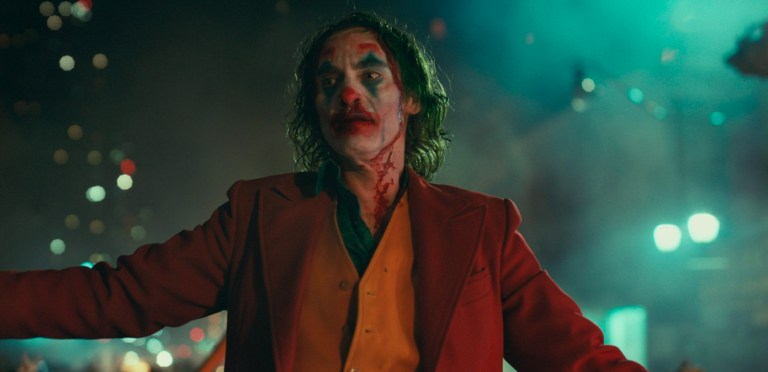
In Todd Phillips’s uniquely unsettling origin tale of the comic-book villain, Joaquin Phoenix stars as Arthur Fleck, a deeply unhappy man living in early 1980s New York. Although Arthur has a pure heart, he lives with his bitterly abusive mother and is continually beaten down by the world’s bullies and sadists. One day, all of the abuse becomes too much for Arthur to bear and he acts out violently. Joaquin Phoenix won the Best Actor Oscar for this role.
I’m Thinking of Ending Things (2020)

A surrealist psychological thriller about a young woman who is contemplating dumping her boyfriend of only seven weeks, but still accepts his invitation to visit his parents at their remote farm. Upon arrival, the woman starts hallucinating that she is actually her boyfriend and that his parents are only versions of her and her boyfriend’s older selves. The ending is surreal but offers no reprieve for the woman’s endless mental torture.
More Psychological Thrillers
- Peeping Tom (1960) A photographer is obsessed with capturing expressions of fear on film.
- Wait Until Dark (1967) Audrey Hepburn stars as a blind woman who defends herself from a group of home invaders.
- Play Misty for Me (1971) A radio DJ in a seaside town deals with an obsessed fan in Clint Eastwood’s directorial debut.
- Straw Dogs (1971) An academic (Dustin Hoffman) moves with his wife to a rural town where they are resented by locals.
- Sisters (1972) Brian De Palma directed this classic about a reporter convinced she saw her neighbor commit a murder.
- Alice, Sweet Alice (1976) Brooke Shields made her film debut in this psychological thriller about a girl who is suspected of stabbing her sister at her first communion.
- Dead Ringers (1988) Twin gynecologists are ride or dies for each other in this David Cronenberg psychological thriller.
- Sleeping with the Enemy (1991) Julia Roberts stars as a woman starting a new life in small town Iowa after she escapes her abusive husband.
- The Hand that Rocks the Cradle (1992) A Seattle family hires a nanny with an ulterior motive.
- The Crush (1993) A writer is pursued by his landlord’s underage daughter.
- True Crime (1996) An aspiring police detective (Alicia Silverstone) falls for a police cadet (Matt Dillon) while investigating a serial killer.
- Apt Pupil (1998) A disturbed high school student becomes obsessed with his neighbor after discovering he is a Nazi war criminal. Based on the novella by Stephen King.
- Insomnia (2002) Al Pacino stars as a crooked detective on a homicide investigation in Alaska.
- Spider (2002) A schizophrenic man with the nickname “Spider” (Ralph Fiennes) is released from an institution and takes up residence in a halfway house, contemplating his troubled childhood.
- Martha Marcy May Marlene (2011) Elizabeth Olsen stars as a young woman who stays with her sister (Sarah Paulson) after leaving an abusive cult.
- We Need to Talk About Kevin (2011) Tilda Swinton is Eva, a mother who is disturbed by her son Kevin (Ezra Miller).
- Enemy (2013) Directed by Denis Villeneuve and starring Jake Gyllenhaal as a man who becomes obsessed with a man who looks exactly like him (also Jake Gyllenhaal).
- Stoker (2013) Following the death of her loving father, a girl is left with her unstable mother.
- Tom at the Farm (2013) A man leaves Montreal to attend his lover’s funeral in rural Quebec, staying with the deceased’s conservative family.
- The Handmaiden (2016) A whirlwind psychological thriller about a pickpocket who is hired by a conman to be the handmaiden for a wealthy heiress.
- Personal Shopper (2016) Part ghost story and part psychological thriller, Kristen Stewart plays Maureen, a woman whose commitment to making contacting her deceased brother may have opened the door for a dark spirit instead.
- Nocturnal Animals (2016) Susan Morrow’s (Amy Adams) life is shaken when a novel written by her ex-husband (Jake Gyllenhaal) brings up unpleasant memories and dark secrets.
- Split (2016) From M. Night Shyamalan, Split stars James McAvoy as as man with 23 distinct personalities.
- You Were Never Really Here (2017) Joaquin Phoenix stars as a severely traumatized private detective who tries to keep his mind together when he is thrust into a conspiracy involving the kidnapping of a senator’s young daughter.
- Burning (2018) Steven Yeun costars in this thriller about an aspiring writer, a beautiful woman from his past, and the mysterious man who may be a danger to them all.
- Uncut Gems (2019) A crime drama with the energy of a psychological thriller.
- Don’t Worry Darling (2022) – Alice’s (Florence Pugh) idyllic life begins to feel like a prison, even though she should be happy with her husband (Harry Styles).
- Eileen (2023) In 1960s Massachusetts two women working at a juvenile detention center become friends.
- Blink Twice (2024) Two cocktail waitresses are invited to a tech billionaire’s private island to enjoy debauchery and luxury but things aren’t what they seem.
- Red Rooms (2024) A techno-savant/model is obsessed with the highly publicized trial for a man accused of murdering three young girls on a dark web livestream.
